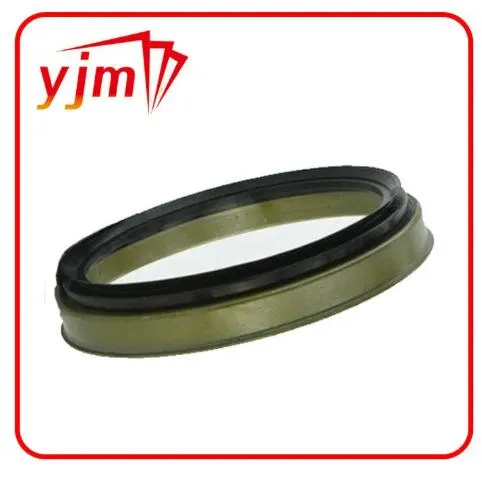Mastering Engine Protection: Understanding the Role of the Crankshaft Oil Seal
Engine performance and longevity depend heavily on effective sealing, particularly around the crankshaft—the component that converts linear piston motion into rotary motion. Among the most vital seals in this area is the crankshaft oil seal, which prevents oil leakage while withstanding constant rotation and pressure. In this article, we break down the differences between the front crankshaft seal, rear crankshaft seal, and other key components like the front main seal and crank seal, explaining their importance, design, and maintenance.

What Is a Crankshaft Oil Seal and Why Is It Crucial?
The crankshaft oil seal often simply called a crank seal—is a dynamic radial seal installed at both ends of the crankshaft. Its job is to prevent oil from leaking out of the engine where the crankshaft exits the engine block or timing cover. This seal also blocks contaminants such as dust and dirt from entering the engine.
These seals are typically made from rubber (NBR or FKM) with a metal or PTFE reinforcement, and they must tolerate high speeds, extreme temperatures, and exposure to engine oil and combustion gases.
Functions of the Crankshaft Oil Seal:
Prevents Oil Leaks: Maintains engine oil within the crankcase
Protects Engine Integrity: Keeps dirt and debris from entering
Ensures Proper Lubrication: Prevents oil loss that could lead to friction damage
If a crankshaft oil seal fails, drivers may notice oil dripping under the engine, visible leaks near the timing cover or flywheel, or even a burning smell from oil hitting hot engine parts. In some cases, a failing seal can also cause the engine to run low on oil, leading to major damage if not addressed promptly.
Differences Between the Front Crankshaft Seal and the Rear Crankshaft Seal
The front crankshaft seal and rear crankshaft seal perform the same basic function but are located at opposite ends of the engine and present different maintenance challenges.
The Front Crankshaft Seal:
Located behind the harmonic balancer (crank pulley) at the front of the engine, the front crankshaft seal is generally easier to access. It's often replaced during routine timing belt or timing chain service.
Common symptoms of failure include oil seepage around the crank pulley
Usually replaced alongside the water pump or front engine cover gasket
Critical in keeping oil away from the serpentine belt and pulleys
The Rear Crankshaft Seal:
The rear crankshaft seal, also known as the rear main seal, is located at the back of the engine, where the crankshaft meets the transmission. Replacing this seal typically requires removing the transmission, making it far more labor-intensive.
Often fails due to crankcase pressure or worn bearings
Oil leaks tend to drip from the bellhousing area
Typically replaced during clutch or transmission work
Both the front crankshaft seal and rear crankshaft seal are essential for engine oil retention, and failure of either can lead to oil loss, environmental hazards, and significant engine damage.
When to Replace the Front Main Seal and Other Maintenance Tips
The front main seal is another name commonly used for the front crankshaft seal. Like other engine seals, it is designed to last tens of thousands of miles, but exposure to heat, chemical breakdown, and mechanical wear can cause it to harden or crack over time.
Signs the Front Main Seal Needs Replacement:
Persistent oil leak at the front of the engine
Low oil levels despite no visible external leaks
Oil-saturated belts or pulleys
Unusual engine vibration or squealing from the front
Crank seals can sometimes leak due to worn-out crankshaft bearings, excessive crankcase pressure, or improper installation. For best performance, it’s recommended to:
Use high-quality replacement seals made from heat- and oil-resistant materials (like Viton)
Check crankcase ventilation systems to prevent pressure buildup
Replace seals during major engine work for cost efficiency
Avoid overfilling the engine with oil, which can increase internal pressure
Many modern engines now use PTFE (polytetrafluoroethylene) lip seals, which offer longer service life and improved heat resistance over traditional rubber seals.
Take Care of Your Crank Seal—It’s a Small Part with a Big Job
Though often overlooked, the crankshaft oil seal—whether it’s the front crankshaft seal, rear crankshaft seal, or front main seal—is critical to your engine’s overall health. A failing crank seal can cause annoying leaks, belt damage, and even major engine failures if left unchecked.
Investing in proper maintenance and using high-quality parts can ensure these seals do their job for the long haul. If you're planning timing belt service or transmission work, it's a great opportunity to proactively replace these seals and prevent future problems.
-
Seal 12x20x5: Precision Radial Shaft Seals for Industrial Reliability
Жаңылыктар Nov.24,2025
-
Seal 12x18x5: Essential Guide to Specifications, Applications & Vendors
Жаңылыктар Nov.24,2025
-
Understanding Seal 12 20 5: Applications, Specifications & Industry Insights
Жаңылыктар Nov.23,2025
-
Durable Oil Seal 85x110x12 – Reliable Sealing Solutions for Industry
Жаңылыктар Nov.23,2025
-
Durable and Precise Oil Seal 75x95x10 for Efficient Machinery | YJM Seal
Жаңылыктар Nov.22,2025
-
Durable Oil Seal 75x100x10 for Reliable Industrial Performance | YJM Seal
Жаңылыктар Nov.22,2025
-
High-Quality Oil Seal 65x90x10 | Durable & Reliable Sealing Solutions
Жаңылыктар Nov.22,2025
Продукциялардын категориялары















